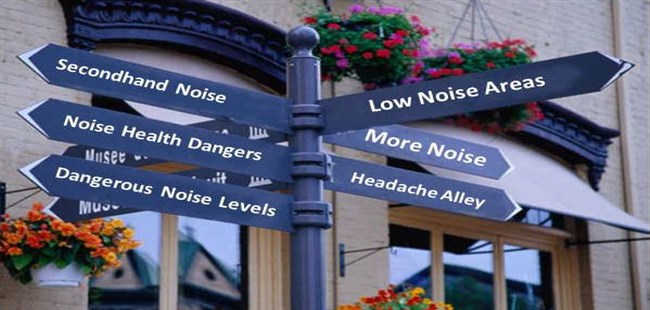Drips and leaks may seem like minor irritations but can, if left unrepaired, cause flooding and damage. Leaks are also dangerous near electrical wiring.
Call in a plumber if you cannot handle these problems yourself.
Basic Plumbing Kit
Be prepared for plumbing problems by keeping a toolkit for routine maintenance and emergencies. Buy the best tools you can afford since they will be easier to use than cheap ones and will hist longer. Make sure you know how to use them safely and effectively. Store your tools where you can easily find them in an emergency.
Dripping Faucets
Drips are extremely wasteful – particularly if they come from a hot-water tap. Drips also create a buildup of lime on sinks or tubs.
A dripping faucet may just need a new washer, it may need to be replaced, or may indicate a major problem, such as a cracked pipe.
Replacing Washers
1. Turn off the water supply feeding the faucet. Use an adjustable wrench to unscrew the faucet cover, inserting a soft cloth between the faucet and the wrench to avoid scratching the finish.
2. Unscrew the large nut inside with an open-ended wrench. Remove the valve mechanism, lift out the old washer, and replace it. Reassemble the faucet.
Plumbing Basics:
• Water supply: Make sure you know where to turn off the water in your home. Turn it off and on from time to time so that you can easily shut it off in an emergency.
• Timing jobs: It is always best to start plumbing jobs early in the morning. That way, if you have to make a trip to the hardware store for any missing parts, it will be open.
• Buying washers: When buying a replacement washer, get several spares at once. The store where you can find them easily, for example, near the main shutoff valve.
• Old faucets: Leaking handles indicate that the gland, which prevents water coming past the spindle when the faucet is on, needs replacing.
A Good Idea
Silencing drips:Tie a piece of string to the spout of a dripping faucet.
The water will flow noiselessly down the string and into the sink.
Dripping Pipes
Burst and dripping pipes can cause floods that will ruin furnishings and even bring down ceilings. Therefore, you must act quickly when you find that there is damage to a pipe. Before attempting any repairs, turn off the water. You may have to call in a plumber.
Temporary Repairs
Copper pipes Enclose the cracked pipe in a piece of garden hose split along its length. Secure with hose clips.
Lead and plastic pipes:Squeeze petroleum jelly into the crack. Wrap a rag or waterproof tape around the pipe until you can get it fixed properly.
Permanent Repairs
1. Rub the pipe with abrasive paper so that epoxy adhesive will stick to it. Smear the adhesive over the crack.
2. Bind fiberglass tape or plumber’s waterproof tape around the damaged area at least twice. Smear more resin over the newly taped surface.
3. Let the adhesive to set hard before you turn on the water. Leave all the taps on until water comes through to prevent airlocks forming in the pipes.
What to do When a Pipe Bursts
Turn off the main water supply and open all the taps to drain the system. Turn off the water heater to prevent the metal of the pipes from overheating and cracking. If water is running through light fixtures, switch off the lights, and take the appropriate fuse out of the main fuse box. Try to find the source of the leak. Bind the crack with a rag or waterproof tape. Keep a bucket under it, and call a plumber. Meanwhile, if ceiling plaster is bulging, move furniture and carpets away, and place a bucket under the area. Pierce the bulge to let the accumulated water out. This will limit the damage to one area.
Noisy Pipes
Most pipe noises are caused by pipes vibrating against one another because they are not supported properly. If the pipes are not secure, put foam rubber between them and the walls, or secure them to a strip of wood. If this fails, you may have an airlock.
Causes of Noise
• Airlocks Air may get into pipes if a lot of water is suddenly drawn off the system. Try tapping along the pipes with a mallet wrapped in cloth to move the air.
• Other causes The main storage tank may need a larger ball float. You could also try installing a special equilibrium ball valve in place of a standard one. This will move less under water pressure, so will be quieter.
Curing an Airlock in a Pipe
Turn all taps on full to run water through the pipes. If this fails, connect a piece of garden hose between the main tap and the problem faucet.Turn on the problem tap, then the clear one. The pressure of the water should push the air out of the pipe and back into the tank.
Turn off the taps when the noise in the pipe stops. Remove the hose from the main tap, and drain it before disconnecting the other end. Reduce the pressure of the main water supply to prevent the airlock from recurring.
Frozen Pipes
Frozen pipes should be thawed out as soon as possible to prevent them from cracking. Thaw U-bends under a sink by wrapping them in rags wrung out in hot water. You can thaw frozen outdoor pipes by pouring boiling water around the area of the pipe that is frozen.
Thawing a Frozen Indoor Pipe
Turn off the water. Turn on taps fed from the frozen pipe to let the water out. Feel all the way along the pipe to locate the frozen area.
Hold a hair dryer on a warm setting close to the frozen part of the pipe. Do not put it too near plastic pipes, or they may melt.
Preventing Freezes
• Keeping cold air out: Keep bath and basin plugs in place to prevent waste pipes and drains from freezing.
• Keeping water moving: For pipes that tend to freeze regularly, leave water faucets dripping overnight during cold spells in the winter.
• Traditional cure: Put a handful of table salt down drains the last thing at night to prevent pipes from freezing.
• Insulating pipes: Insulate pipes using foam secured in place with duct tape.
Blocked Drains And Sinks
Sinks and drains often become blocked drains open with a mixture of salt, baking soda, because of grease, food scraps, or other solid and cream of tartar. Do not use lye dec loggers waste has been poured down them. Keep – it will combine with fat to form a hard plug.
Removing Blockages From Pipes
Sinks and baths Bale out water in a blocked sink into a bucket. Pour a cupful of washing soda followed by boiling water down the drain. Repeat if necessary.
Using a Plunger
If the treatment above fails, use a plunger. Smear the rim with petroleum jelly, place it over the plughole, and run water until the cup is covered. Pump the handle in an up-and-down movement.
Outside drains Use the treatment for indoor drains to remove blockages outdoors. For serious blockages outdoors, you may have to use a snake or call a plumber
U-bend blockages: If the blockage is in the U-bend, it will not respond to a plunger. Place a bucket underneath the bend, and unscrew the U-bend. Carefully poke a piece of wire up the pipe until you free it.
Smelly Drains
Keeping drains fresh: Flush baking soda down a drain with hot water to stop odors.
Timesaving Tip
Unscrewing U-bends: Before replacing a U-bend, smear petroleum jelly around the threads of the screw. Next time you need to undo it, it will come off easily.






